Vienna's Artful Soul: The City's Top Ten Art Museums
- The editorial team

- Jul 22
- 6 min read
Updated: Sep 10

In Vienna, art is an integral part of the city's fabric, a dense concentration of masterpieces and revolutionary ideas condensed into one magnificent urban core.
You can step from the imperial splendour of a Habsburg palace into a stark white cube showcasing the radical art of the 21st century, all within a few city blocks.
For any traveller looking to understand the forces that shaped European art history, from the Renaissance to the contemporary, Vienna's galleries provide the essential guide. Here are ten of the city's art institutions.
The Belvedere
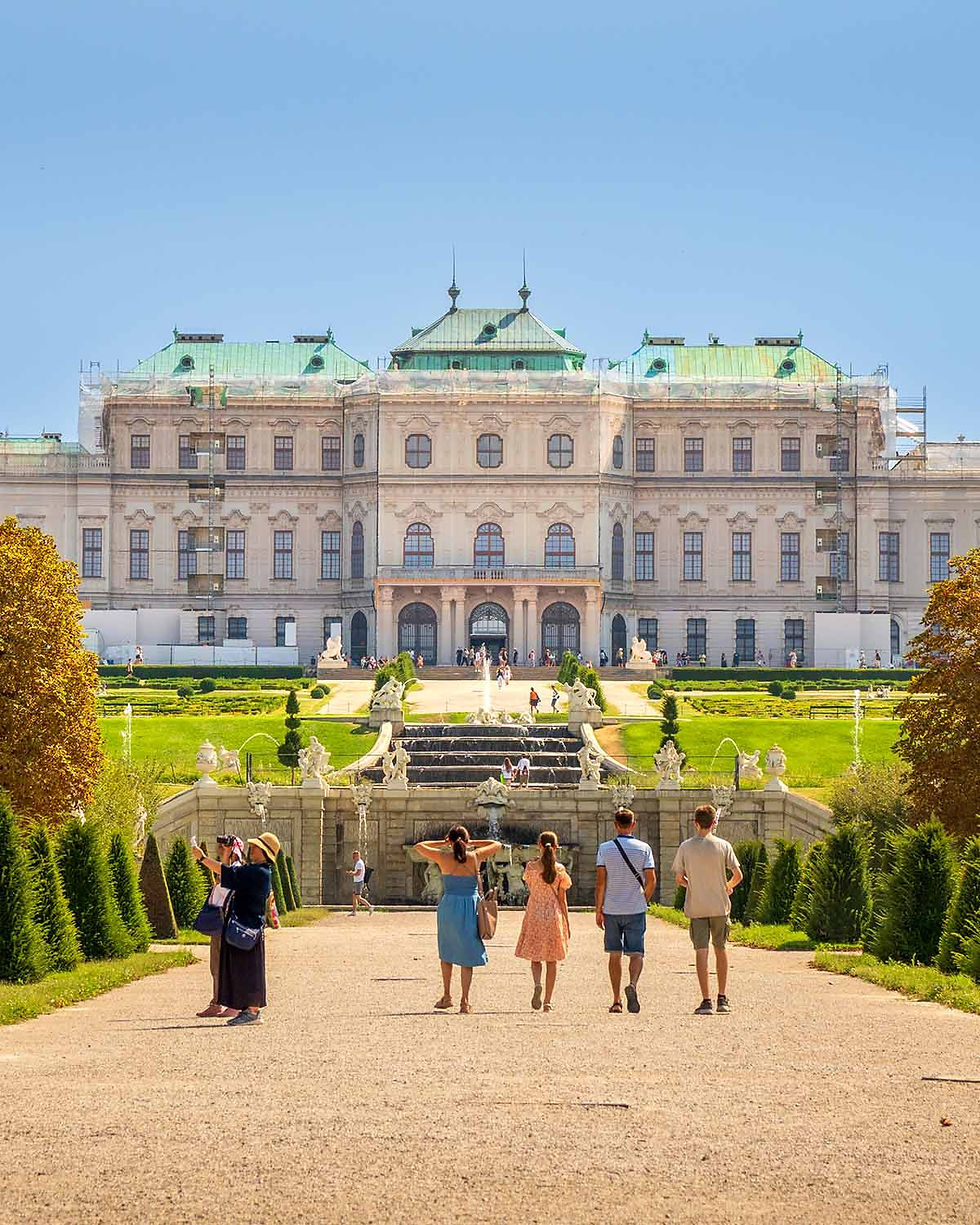
The Belvedere comprises two stunning Baroque palaces, the Upper and Lower Belvedere, connected by a magnificent tiered garden offering sweeping views of the city. This UNESCO World Heritage site is synonymous with one name above all: Gustav Klimt. The Upper Belvedere houses the world's most significant collection of his works, including the luminous, iconic masterpiece, "The Kiss."
But there is more to the Belvedere than Klimt. The collection offers a comprehensive overview of Austrian art from the Middle Ages to the present day, featuring seminal works by Egon Schiele and Oskar Kokoschka, as well as masterpieces from French Impressionism and the Vienna Biedermeier era.
A short walk away lies Belvedere 21, the contemporary art arm of the institution. Housed in a landmark of post-war modernism, it is a hub for Austrian and international art from 1945 to the present day. With a dynamic programme of exhibitions, film screenings, and performances, it is where the artistic legacy of Vienna continues to be written.
Address: Prinz Eugen-Straße 27
Address Belvedere 21: Arsenalstraße 1
Website: www.belvedere.at
Leopold Museum
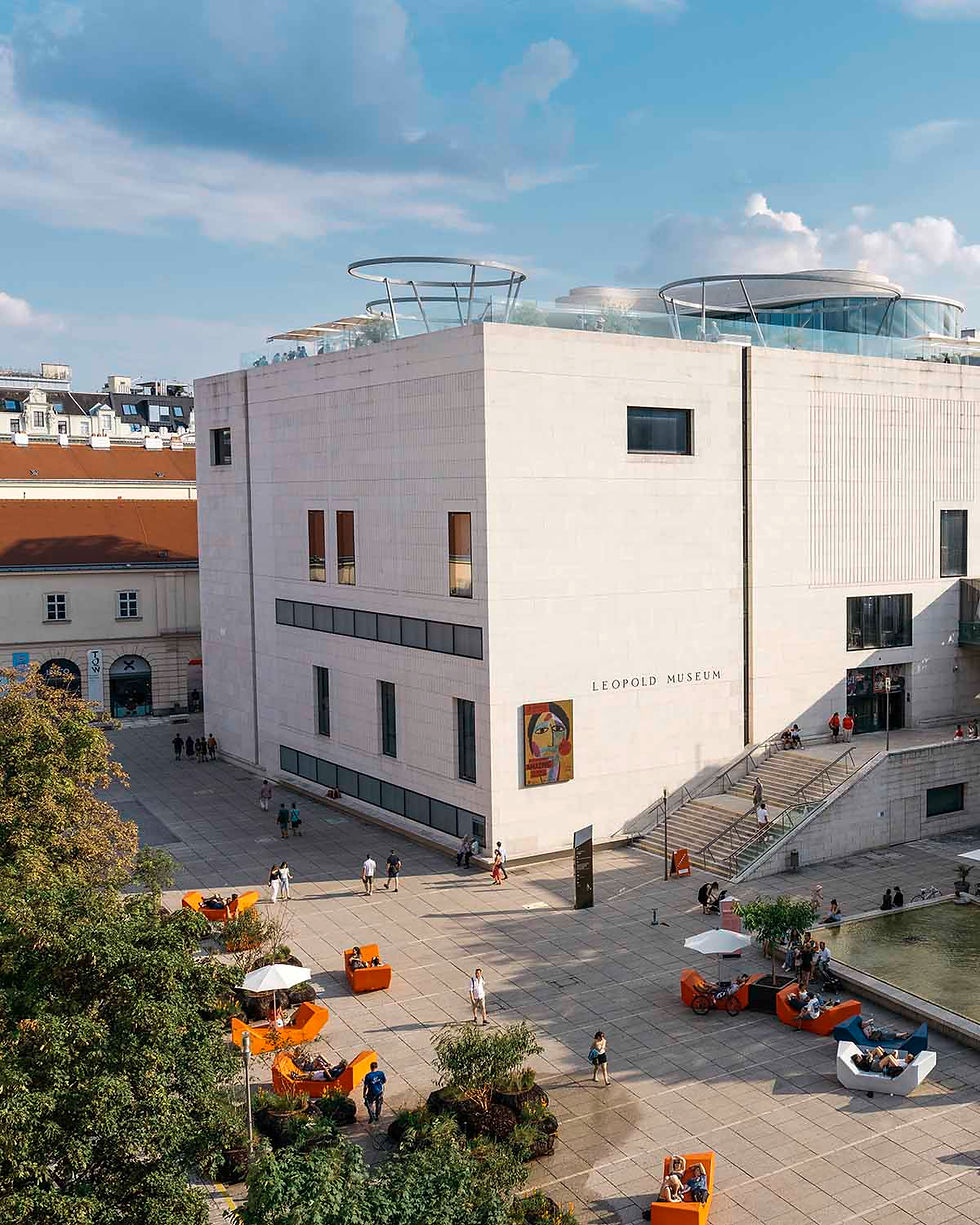
Nestled in the heart of the vibrant Museums Quartier, the Leopold Museum is a luminous, cube-like building that holds the world's most important collection of Austrian modern art. Amassed by the passionate collectors Rudolf and Elisabeth Leopold, the museum is home to the most extensive collection of works by Egon Schiele, offering an unparalleled insight into his raw, confrontational, and brilliant oeuvre.
The museum also provides a deep dive into the art of the "Vienna 1900" period, with significant works by Gustav Klimt, Oskar Kokoschka, and Richard Gerstl, alongside an extensive collection of furniture and decorative arts from the Wiener Werkstätte. The focused collection and intimate setting make it a powerful and profoundly moving experience.
Address: MuseumsQuartier, Museumsplatz 1, 1070 Vienna
Website: www.leopoldmuseum.org
The Albertina
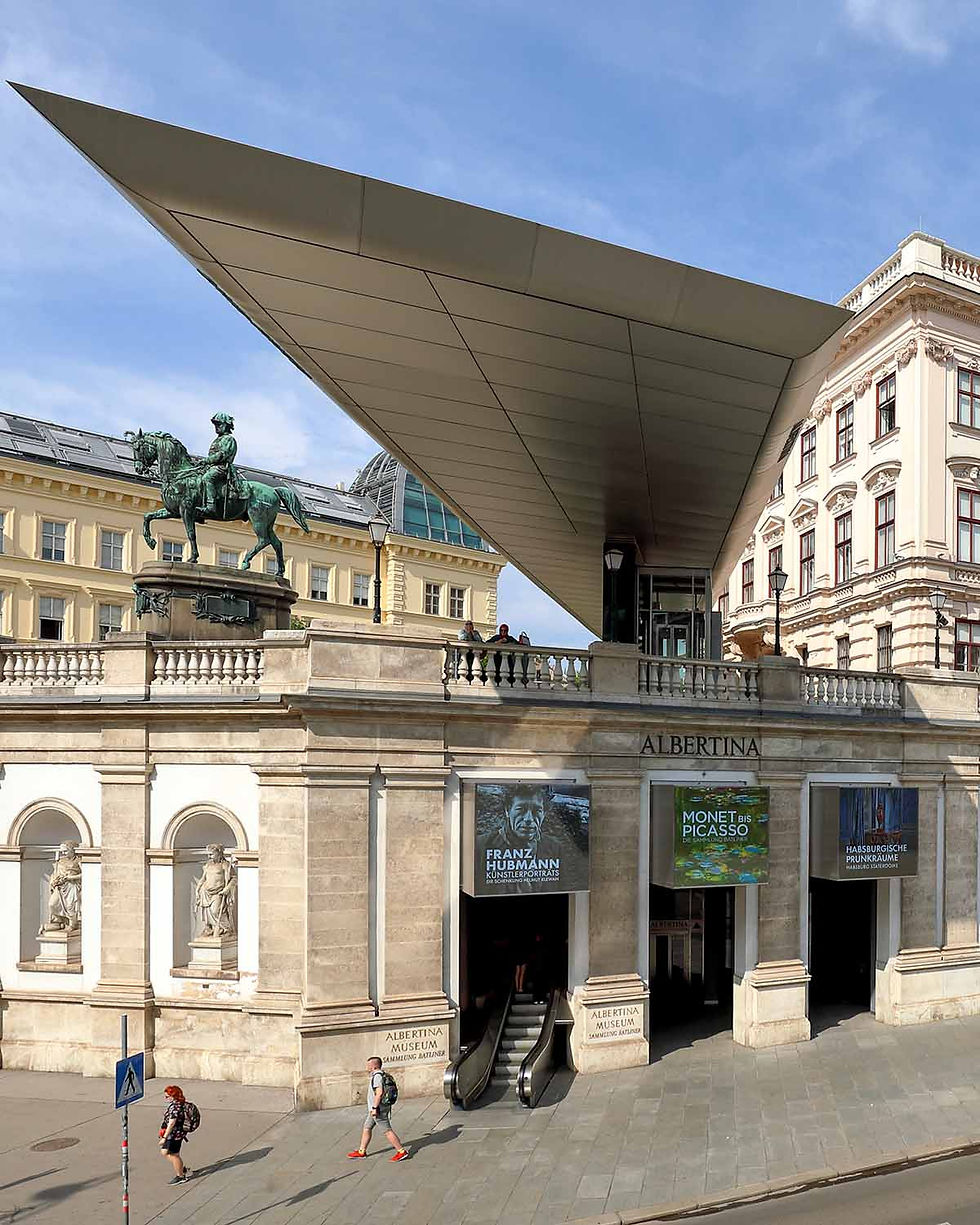
Once a Habsburg residential palace, the Albertina seamlessly blends imperial opulence with a world-class art collection. It boasts one of the most extensive and essential graphic art collections in the world, comprising over a million prints and 60,000 drawings.
While iconic works like Dürer's "Young Hare" are too fragile for permanent display, the rotating exhibitions from this collection are exceptional. More visibly, the Albertina's permanent "Monet to Picasso" exhibition showcases a stunning array of modernist masterpieces.
Albertina Modern, located at Karlsplatz 5, opened in 2020 as a separate venue. Dedicated to Austrian and international art since 1945, the Albertina is a true powerhouse of the Viennese art scene.
Address: Albertinaplatz 1, 1010 Vienna
Website: www.albertina.at
MUMOK (Museum of Modern Art Ludwig Foundation Vienna)

Also located in the MuseumsQuartier, the MUMOK's imposing dark basalt cube stands in stark contrast to the historical buildings surrounding it, a clear statement of its contemporary focus. As the largest museum for modern and contemporary art in Central Europe, its collection features a remarkable range of international art from the 20th and 21st centuries.
Here, you will find major works of Pop Art by Andy Warhol and Roy Lichtenstein, as well as Fluxus and Nouveau Réalisme, and Viennese Actionism. The museum is dedicated to showcasing the art of our time, with an emphasis on photography, video, and performance art, making it a must-visit for those who want to experience the cutting edge of the art world.
Address: MuseumsQuartier, Museumsplatz 1, 1070 Vienna
Website: www.mumok.at
Kunsthistorisches Museum (Museum of Art History)

Dominating the grand Ringstrasse, the Kunsthistorisches Museum is a palace of art. Commissioned by Emperor Franz Joseph I to house the formidable Habsburg collections, the building itself is a masterpiece of neo-Renaissance architecture. Inside, you are met with a staggering collection that spans from Ancient Egypt and Greece to the late 18th century. The Picture Gallery is the main event, boasting the world's most extensive collection of works by Pieter Bruegel the Elder, including the iconic "Tower of Babel" and "Hunters in the Snow." Masterpieces by Vermeer, Rembrandt, Raphael, Caravaggio, and Velázquez jostle for your attention in room after glorious room. Don't miss the Kunstkammer, a cabinet of curiosities that offers a fascinating glimpse into the collecting passions of emperors and archdukes.
Address: Maria-Theresien-Platz
Website: www.khm.at
Secession Building

With its intricate, gilded laurel-leaf dome, famously derided as the "golden cabbage," the Secession Building is an icon of Viennese Art Nouveau. Built in 1897 as an exhibition hall for the progressive Secession movement, which broke away from the conservative arts establishment, its motto is inscribed above the entrance: "To every age its art, to every art its freedom."
Inside, the building remains a space for contemporary art exhibitions. Its permanent treasure, however, lies in the basement: Gustav Klimt's magnificent "Beethoven Frieze," a 34-meter-long interpretation of Beethoven's Ninth Symphony. It's a breathtaking, immersive work of art and a pilgrimage site for any admirer of Klimt.
Address: Friedrichstraße 12, 1010 Vienna
Website: www.secession.at
MAK – Museum of Applied Arts
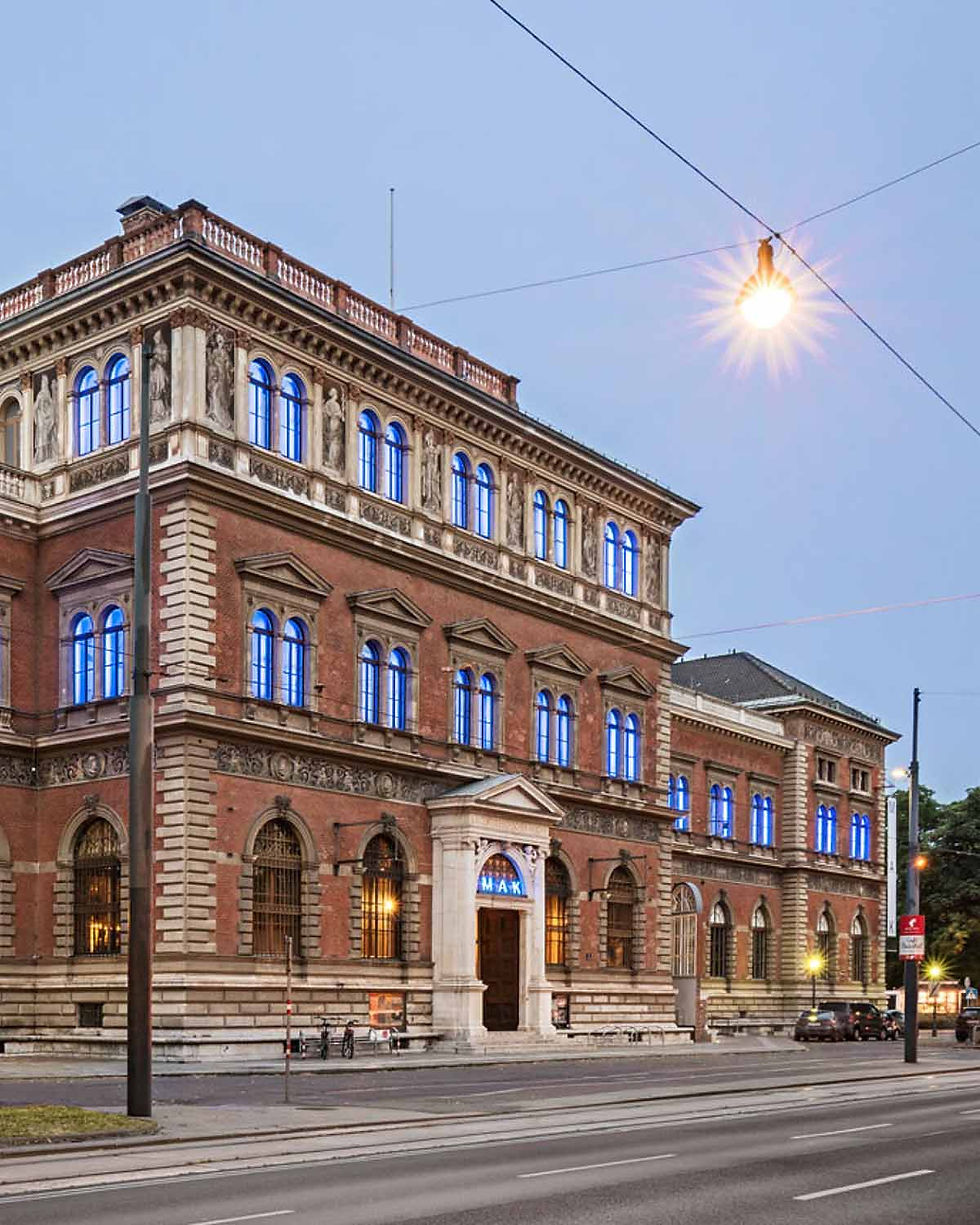
The MAK offers a different, yet equally fascinating, perspective on Vienna's artistic legacy. It explores the intersection of art, design, and architecture. The permanent collection is a journey through centuries of design, from precious medieval objects and exquisite Wiener Werkstätte furniture to contemporary product design. A highlight is the "Vienna 1900" display, which showcases the revolutionary designs of Josef Hoffmann, Koloman Moser, and others. The innovative and often interactive special exhibitions consistently push the boundaries of art and design.
Address: Stubenring 5, 1010 Vienna
Website: www.mak.at
Heidi Horten Collection

One of Vienna's newest private museums, the Heidi Horten Collection is housed in the Hanuschhof. This former state office building has been beautifully transformed between the Albertina and the State Opera. Over several decades, the late Heidi Horten amassed an impressive collection of several hundred works, reflecting a personal passion for 20th-century art. The collection is a high-quality survey of modern art history, featuring strong representations of German Expressionism, Pop Art from both America and Europe. It works by masters such as Picasso, Chagall, and Richter. It's a beautifully curated experience that offers a more intimate, personal journey through a century of art.
Address: Hanuschgasse 3, 1010 Vienna
Website: www.hortencollection.com
Kunsthalle Wien
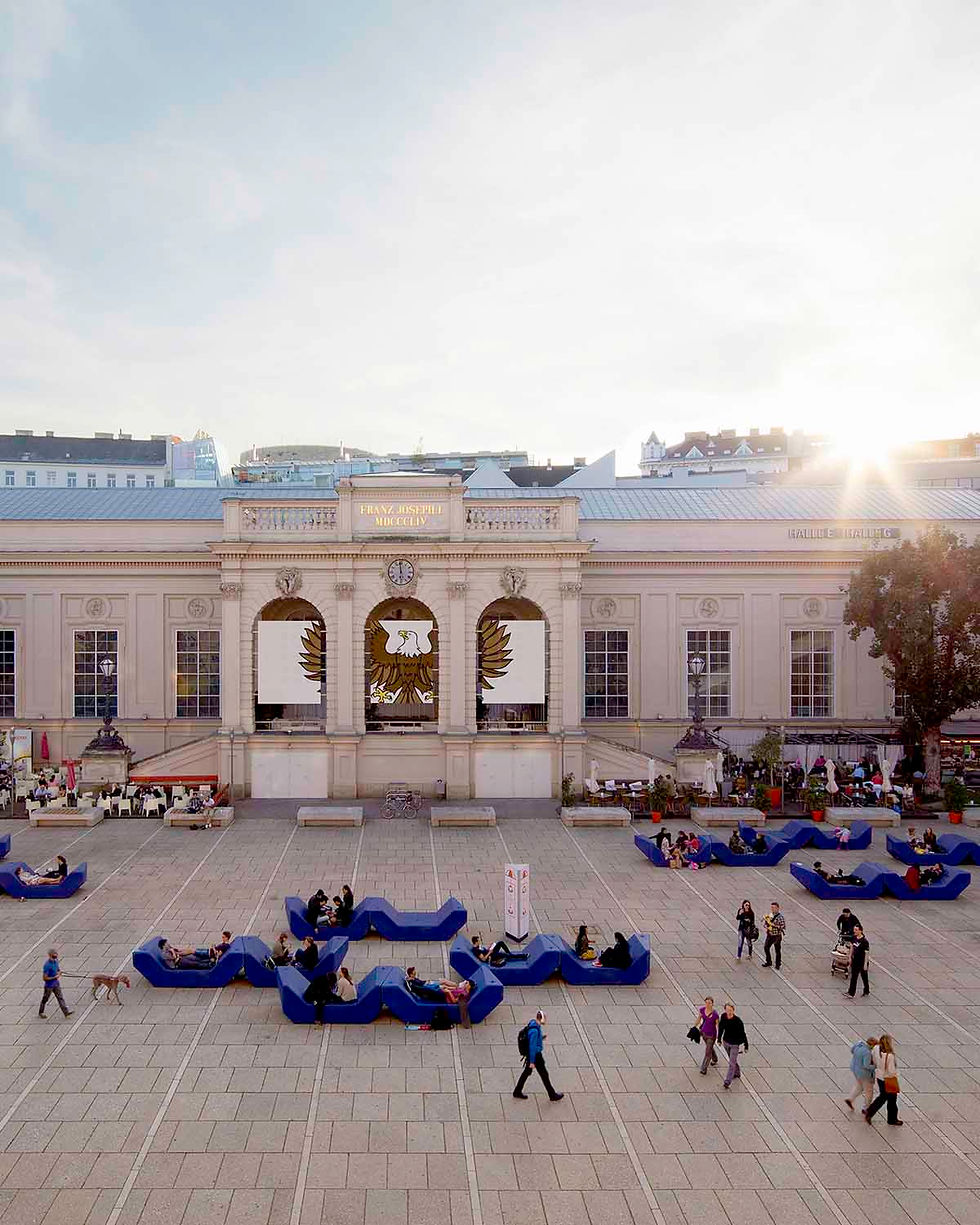
For a finger on the pulse of the international contemporary art scene, look no further than the Kunsthalle Wien. Spread across two locations in the Museums Quartier and at Karlsplatz, it does not have its own collection. Instead, it dedicates itself to presenting themed group exhibitions and solo shows by contemporary artists from around the world.
The Kunsthalle is a space for discourse and experimentation, often tackling challenging social and political themes through a variety of media. A visit here is always a discovery, offering fresh perspectives and a glimpse into the art of tomorrow.
Address: MuseumsQuartier, Museumsplatz 1, 1070 Vienna & Karlsplatz, Treitlstraße 2, 1040 Vienna
Website: www.kunsthallewien.at
Bank Austria Kunstforum Wien

Located in a striking corner building on the Freyung square, the Bank Austria Kunstforum Wien is a premier venue for blockbuster temporary exhibitions. While it has a notable collection of post-war Austrian art, it is best known for its masterfully curated solo shows dedicated to the pioneers of the classical modern period.
The Kunstforum has hosted sensational exhibitions on artists such as Van Gogh, Cézanne, Picasso, and Schiele, drawing crowds from across the globe. The focused, high-calibre nature of its exhibitions makes it an essential stop; check its schedule before your visit to see which master is being celebrated.
Address: Freyung 8, 1010 Vienna
Website: www.kunstforumwien.at
Vienna Travel Tips

Getting Around: Vienna's public transport system (Wiener Linien) is a model of efficiency. A network of trams, buses, and U-Bahn (underground) lines makes navigating the city straightforward. Consider purchasing a 24, 48, or 72-hour pass for unlimited travel.
Save with a City Card: If you plan to visit several museums, consider the Vienna City Card. It offers unlimited public transport and discounts at numerous museums, sights, and restaurants. For serious sightseers, the Vienna Pass provides free entry to over 60 attractions, including many of the museums listed above.
Best Time to Visit: The shoulder seasons of spring (April-May) and autumn (September-October) offer pleasant weather and fewer crowds than the summer peak. Winter is also magical, especially around Christmas, and perfect for spending cosy afternoons wandering through galleries. Weekdays are generally quieter for museum visits than weekends.



















